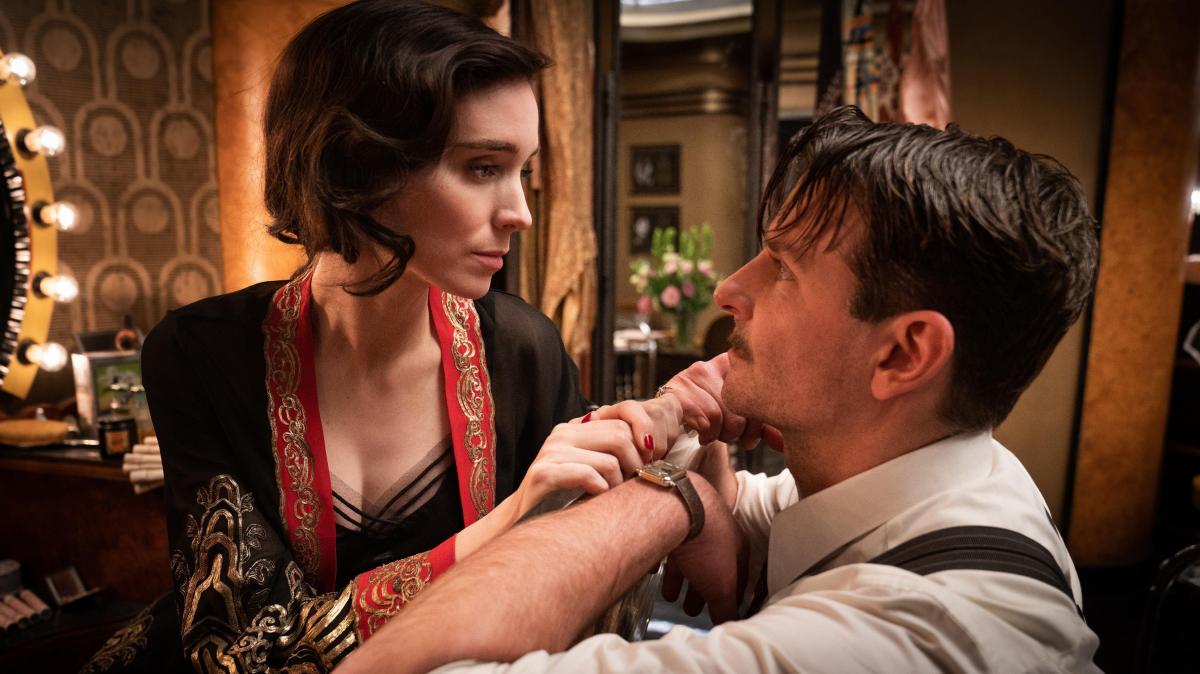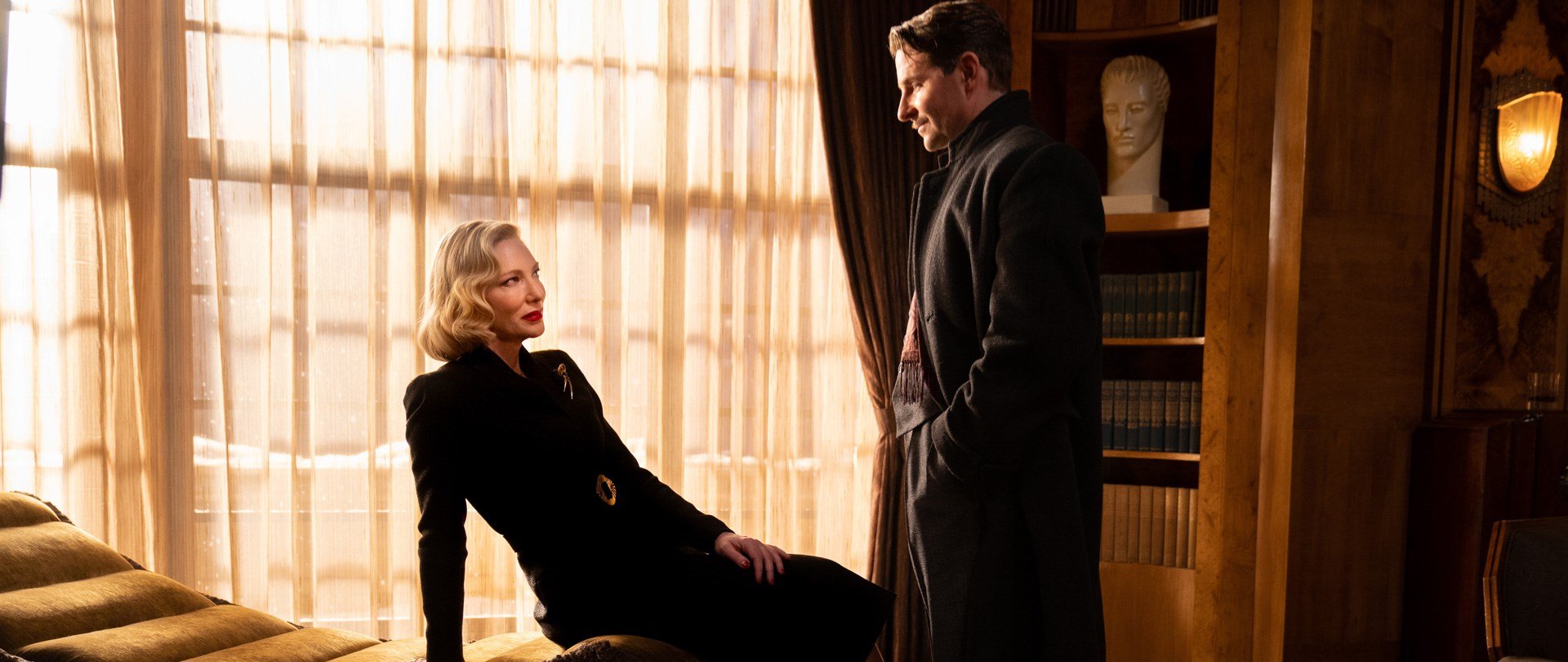Nightmare Alley: The Thief’s New Clothes
The most recent film directed by the popular award-winning Mexican filmmaker Guillermo del Toro is yet another adaptation of William Lindsay Gresham’s eponymous 1946 novel. The first such adaptation, released in 1964, was directed by Edmund Goulding (and starring Tyrone Power in the lead role) and is a noir film that was only appreciated by the critics long after its release. In contrast to Goulding, Guillermo del Toro seems to have a different approach to the source material. To be more precise, he turns it into what he seems to love most, in the past couple of years: and that is, a melodrama. The original Nightmare Alley, just like most noir movies shot before and after the Second World War, evoke a common state of mind of a world that nobody would like to be a part of. Del Toro’s version is only partially more elaborated, and offers itself more time to unravel: two and a half hours, to be precise, in contrast to Goulding’s one hour and fifty-minute long film.

Thus, mentalist, conman and master manipulator Stanton Carlisle (performed by Bradley Cooper) goes through a much larger scope of events than his predecessor, Tyron Power, did. Guillermo del Toro feels the need to dig deep into the conscience of this character that slowly ends up collapsing under his own weight. Stanton Carlisle is a handyman working in a carnival that is willing to hire anyone that is willing to work for a meal and a dollar a day. In this milieu, he learns a series of tricks that propel him to the status of being the carnival’s main attraction, as he truly starts to matter – to himself and to others, as well. He enjoys his minor glory until he will end up discovering that he is little more than an influential salon charlatan. Although he is charismatic, he can also be regarded as a quite unlucky fellow. He seemingly wins the lottery by discovering his special talents with the aid and support of Pete (David Strathairn) – an older mentalist – and thus begins to dominate the minds of the elites living in 1940s New York. The entire labored process of showing the rise and fall of Carlisle is dotted by various characters that only briefly appear in Goulding’s film. One of them is Bruno (Ron Perlman), the elderly and tired muscle-man who protects Carlisle’s future wife, Molly (Rooney Mara), who has problems with his knees and can barely lift weights over his head anymore. There’s also Dr. Lilith Ritter (Cate Blanchett) – a character which only appears in Goulding’s film just to plunge Carlisle’s life into chaos. Del Toro’s take on the character is a presence that is more than insistent, occupying too much screen time by striking provocative poses, throwing piercing seductive glances over her shoulder, crossing her legs and slowly speaking her words. Still, if there is one thing to commend, when it comes to her bombastic and elaborate trap, that would be Cate Blanchett’s voice, which is strikingly similar to that of actress Helen Walker, who performed Dr. Lilith in the original film.
Del Toro’s version has nothing of the anxiety that is provoked by the gloomy air that dominates Goulding’s film, and that is because it doesn’t fully pastiche the noirs which its director professes to adore. It’s true that he is toying around with some of the more frequent characteristics of noir films: the famous lights and shadows, the way in which he chooses to cut certain short at a certain point, then move the entire plot onto another point of interest (an old trick, often used in noir flicks and other classical films), the fact that the protagonist’s shirt collar fully covers the back of his head; including some of the character’s main traits, as he is a leisurely hard smoker, always having a dry and appropriate answer to any question he might be asked, and who ends up being chased up narrow, dark and dank streets countless times. They say that Bradley Cooper is performing his best ever role in this film. The future charlatan, with his air of superiority and economic use of words, has an excellent placement in some of the scenes – especially in the film’s beginning -, where Cooper’s eyes seem to express a lot more fear towards his fellow humans than of monsters.

I think this is Guillermo del Toro’s sole film that doesn’t go for the supernatural – in the sense that magic and spirits are here the products of swindling, but their effect has the very same efficiency as if they weren’t (both for some of the gullible characters, as well as for the spectator witnessing this disorienting spectacle). In Nightmare Alley, horror is something that is much rather implied than it is manifest. It’s not a result of regular genre tropes – it’s a mindtrickery that perfectly functions between both types of perception. Furthermore, his symbolism goes as far as to include a misshapen fetus in a jar of formaldehyde, who sports an eye in the middle of his forehead, a premonitory sort of mini-cyclops, ashe constantly observes Carlisle as if his fate would always be dictated by that wretched eye. Another example of how del Toro’s horror elements are efficient, as he characteristically toys with them in masterful fashion, is the moment in which Stanton Carlisle arrives at the carnival. Amongst some of the other lessons that he has learned from his maester, Clem Hoatley (Willem Dafoe), is the useful tip that a drop of opium tipped into any man’s drink can rip them of their humanity and independence. He is presented with a caged wild man, who feasts upon living chicken, ripping their heads off with his bare teeth. The scene is so cruel that Goulding, if he had even the courage to entertain this idea, wouldn’t have mustered the courage to approach it.
We must also take note of the way in which the film delivers the exact expectations that one might have had before watching it. You’d expect it to have a wonderfully-composed soundtrack? Check. You’d expect del Toro to show off his masterly grip on the grotesque, one of his specialties? Also checked. A film that looks absolutely gorgeous and flaunts it? Check! Still, one can take away more than just Nightmare Alley’s masterful framings. And here I especially mean the way in which the film, precisely in one of its final lines, exchanged between Stanton Carlisle’s new employer (Tim Blake Nelson, in a short performance as a circus director) seems to resume the whole reason why del Toro chose to re-adapt Gresham’s novel: “You’ve got to have something new today”. One way or another, however one may look at it, Nightmare Alley tells the story of the same old thief, wearing brand-new clothes.
Film critic since 2008, film lover since he was 4 years old. Former editor for the ART7 cultural platform and former film programmer for the "Horror Saturday" section of the Romanian Cinematheque. He writes film and festival reviews wherever he can and wherever he is invited to do so. He loves cats, like most humans do, he's an amateur ornithologist and he'd much rather see a good 80s horror film than an awarded hollywoodian drama.


